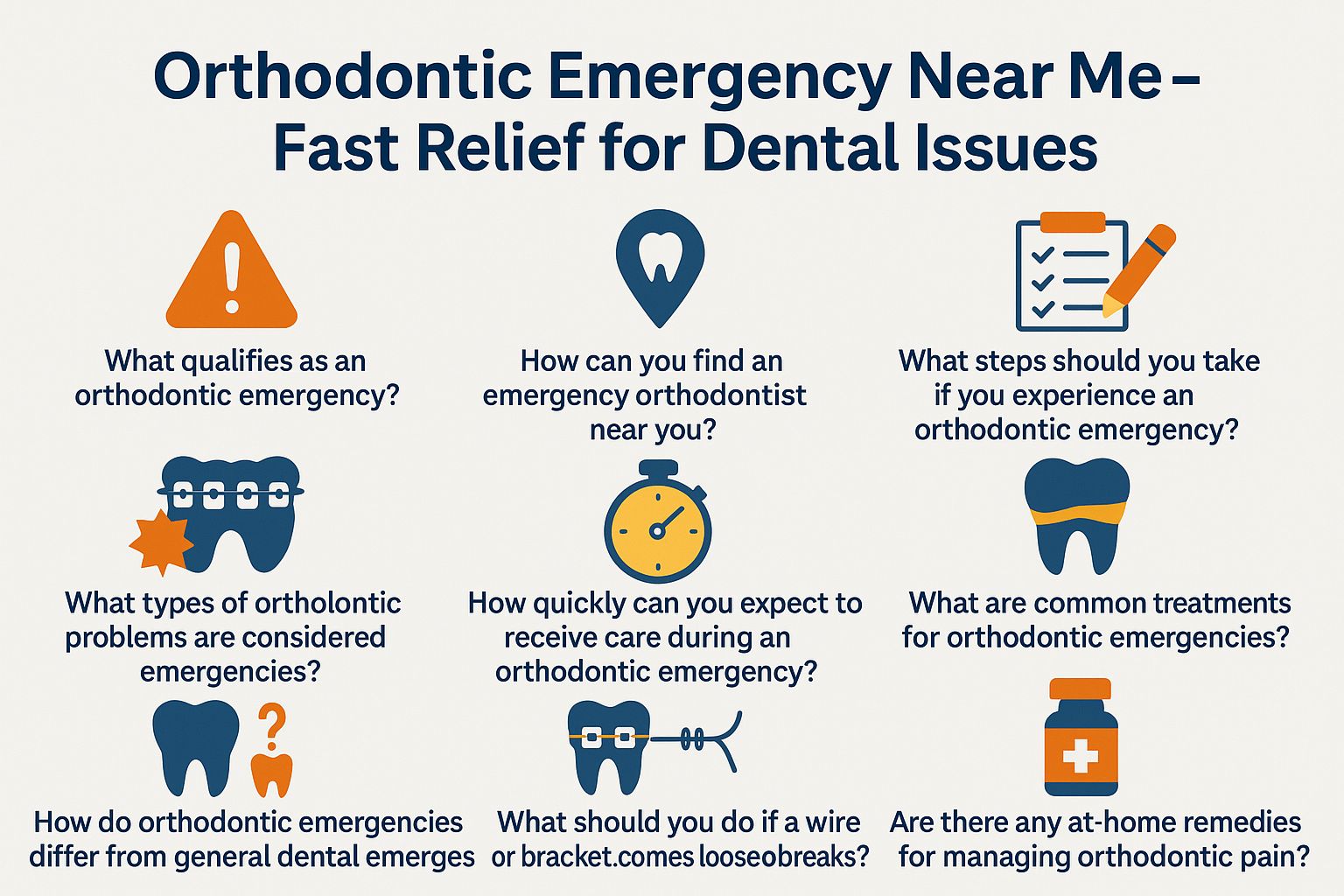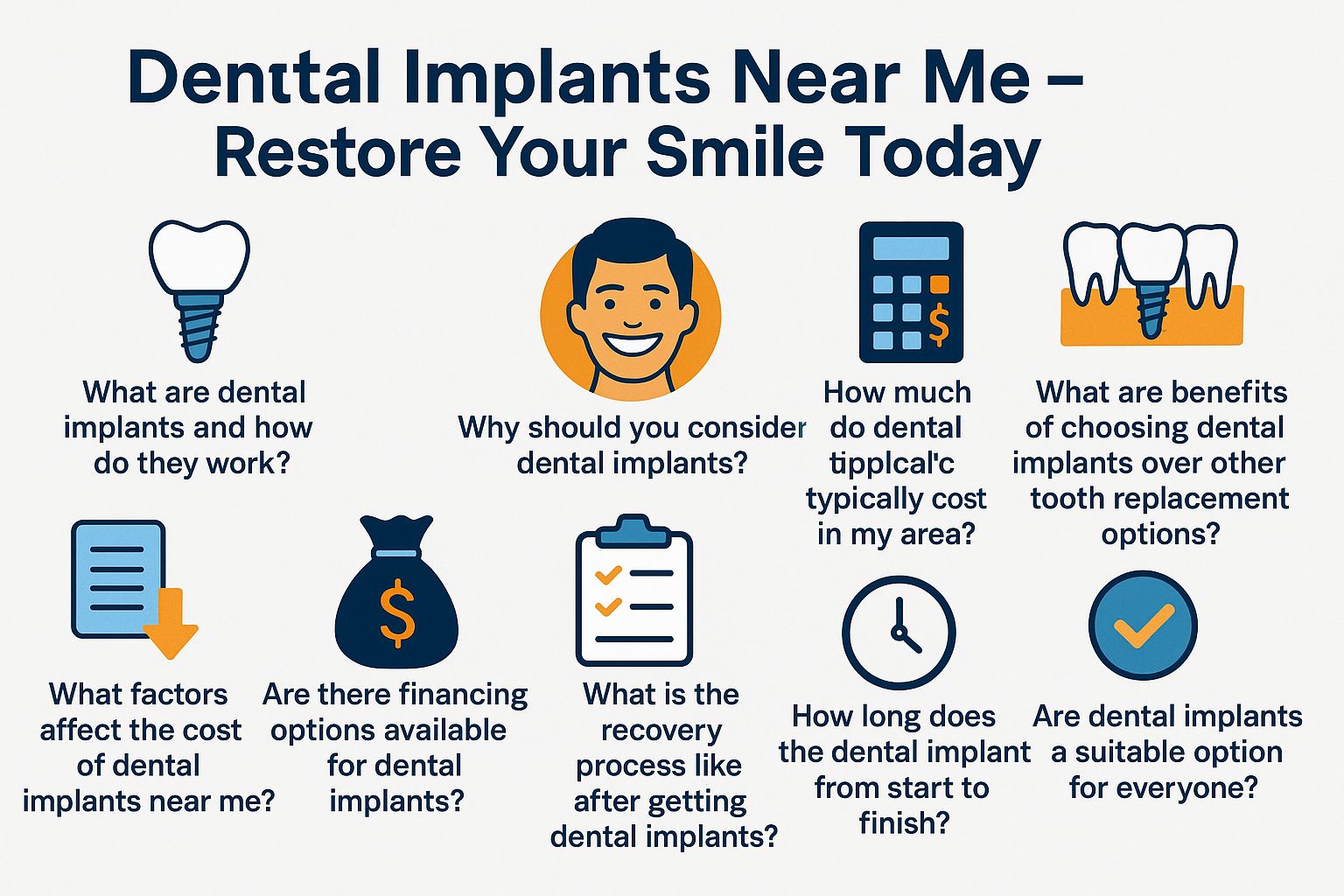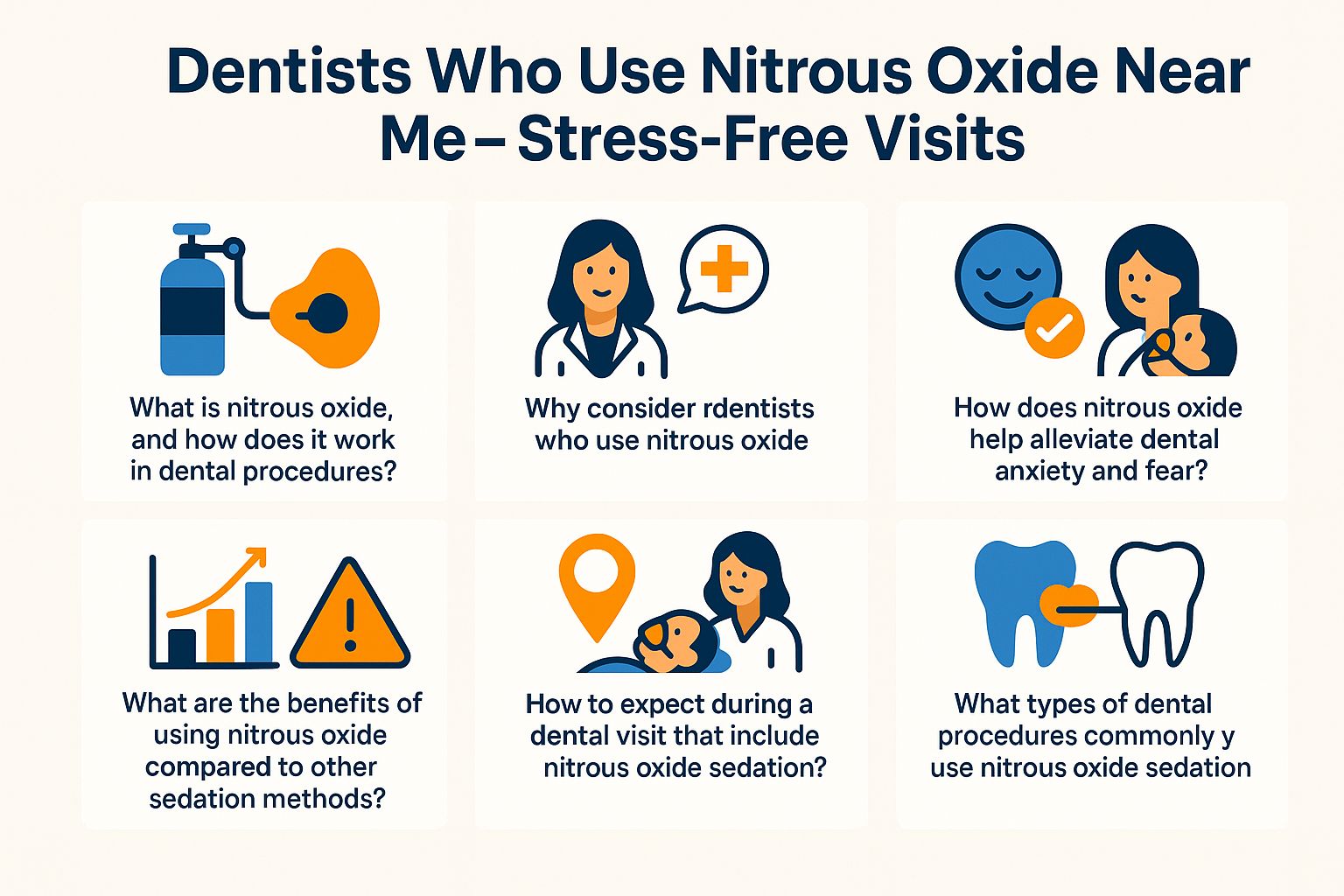Orthodontic emergencies can be stressful. Emergency dental care solutions are available. No matter if you’re in Georgia or Florida, a skilled dentist is on standby to offer the urgent dental care you need. Inglewood dental experts are well-prepared to address a variety of orthodontic issues, ensuring you receive prompt and effective orthodontic emergencies treatment.
This guide covers what qualifies as an orthodontic emergency, how to find dental clinics, and crucial steps for immediate relief. To prevent problems with braces, maintain good oral hygiene and follow your orthodontist’s instructions.
Stay informed to ensure your orthodontic and overall dental health are quickly restored.
What qualifies as an orthodontic emergency that requires immediate attention?
Orthodontic emergencies need immediate care to relieve pain or prevent complications, like broken braces or teeth.
Common scenarios of dental emergencies include:
- Broken brackets, causing irritation to cheeks or gums.
- Loose wires that can protrude into the mouth and result in injury or tooth pain;
- Severe tooth pain associated with movement or pressure, often requiring emergency dentist intervention.
About 62% of orthodontic patients face emergencies during treatment.
Contact your orthodontist quickly. They can provide temporary solutions and pain relief advice.
How can you find an orthodontic emergency clinic near you?
You can find an emergency orthodontic clinic using online tools and local directories for quick access.
Start by using Google Maps with keywords like ‘orthodontic emergency near me‘ or ‘dental clinic’ to identify nearby facilities. Additionally, cross-reference Yelp for user reviews and past experiences, which can offer valuable insights into the dental clinic’s reliability and quality of service.
Contact your regular or emergency dentist. They can refer you to reputable clinics. Furthermore, utilizing platforms like Zocdoc enables you to schedule immediate appointments, thereby offering both speed and convenience during urgent situations and ensuring rapid dental access.
What steps should you take if you experience an orthodontic emergency?
Effectively responding to an orthodontic emergency is essential; adhering to specific steps can help minimize damage and discomfort while ensuring prompt professional assistance and patient comfort.
Follow these steps during an orthodontic emergency:
- Begin by assessing the situation-identify any broken wires, broken brackets, or broken teeth.
- It is advisable to contact your orthodontist immediately, as many practices offer emergency services.
- If you are unable to reach your orthodontist, consider visiting an emergency clinic or emergency dentist for assistance.
- To prevent further damage, do not pull on loose wires. Use a pencil eraser to gently reposition them or apply orthodontic wax.
For pain, use over-the-counter medications like ibuprofen. Keep a record of your symptoms for your orthodontist.
What types of orthodontic problems are considered emergencies?
Some orthodontic problems are emergencies, especially those causing significant pain or affecting treatment.
Common orthodontic emergencies include:
- broken brackets
- loose or broken wires
- painful tooth movement
- injuries to the gums or oral cavity caused by appliances
For instance, a patient experiencing a loose wire was able to resolve the situation within two hours by reaching out to their orthodontist, who offered guidance over the phone and provided instructions for temporary solutions, such as utilizing a cotton ball to alleviate discomfort.
Knowing how to respond quickly can reduce complications and keep your treatment on track. Knowing the differences helps patients seek timely care.
How quickly can you expect to receive care during an orthodontic emergency?
The speed of receiving care during an orthodontic emergency varies by clinic policies. Most clinics address urgent cases within a few hours.
At Tioga Dental & Orthodontics, patients can expect a phone consultation within 30 minutes.
If further examination is necessary, in-person appointments are scheduled within 1 to 3 hours, contingent upon the severity of the situation.
About 80% of clinics prioritize emergency cases to address urgent needs promptly.
To enhance the overall experience, call ahead to enhance your experience. This helps facilitate quicker service and clarifies the information you need to prepare, like dental history and insurance details.
What are the common treatments provided for orthodontic emergencies?
Common treatments for orthodontic emergencies range from simple adjustments to complex procedures. These aim to alleviate pain and restore function.
For example, minor issues, such as loose brackets, are typically resolved by replacing or adjusting their positioning, often completed within a single visit.
In more severe cases, such as a wire that has become displaced, orthodontists may need to trim the wire to prevent irritation. Effective pain management is also essential, which may involve the use of over-the-counter medications like ibuprofen or prescribed solutions.
If problems persist, especially with significant discomfort or misalignment, emergency extractions may be necessary to ensure oral health.
How do orthodontic emergencies differ from general dental emergencies?
Both orthodontic and general dental emergencies necessitate prompt attention; however, they differ significantly in their causes, treatments, and the specific needs of patients.
Orthodontic emergencies typically stem from complications related to braces, aligners, or denture implants. For instance, a broken bracket or broken dentures can be temporarily addressed using orthodontic wax until a professional appointment can be arranged.
In contrast, dental emergencies may arise from issues such as tooth decay, abscesses, broken front teeth, or trauma. These situations require the intervention of an emergency dentist, who is equipped to provide necessary treatments, including fillings, tooth extractions, or root canal treatment.
Understanding these distinctions helps patients seek timely care. Orthodontic concerns should be managed by specialists, while general issues can be addressed by various dental professionals, enhancing overall dental health.
What should you do if a wire or bracket comes loose or breaks?
When a wire or bracket becomes loose or breaks, it is important to take prompt action to alleviate discomfort and prevent additional complications until professional assistance can be obtained from an emergency dentist.
- First, assess the area where the wire is causing pain or tooth sensitivity. If it is protruding against the cheek or gum, you may gently push it away using a cotton swab or the back of a spoon.
- In the case of a loose bracket, it is advisable to refrain from manipulating it or attempting to reattach it independently. Instead, contact your orthodontist or emergency dentist immediately for further guidance.
-
- Keep a supply of orthodontic wax to alleviate irritation from loose components. It can also temporarily stabilize loose brackets until your appointment.
Are there any at-home remedies for managing orthodontic pain or discomfort before seeing a specialist?
You can effectively manage orthodontic pain at home while waiting for professional treatment. This ensures comfort and minimizes discomfort.
Managing orthodontic pain at home can be an effective strategy while awaiting professional treatment, ensuring patient comfort and minimizing discomfort. To alleviate discomfort and toothaches, the following four practical remedies are recommended:
- Apply a cold compress to the affected area to help reduce swelling and soothe pain.
- Utilize over-the-counter pain relievers such as acetaminophen or ibuprofen for prompt relief during dental emergencies.
- Rinse the mouth with warm salt water to alleviate irritations and promote healing.
- If there are sharp edges on the braces, the application of orthodontic wax can provide a protective barrier, reducing contact with soft tissues and enhancing patient comfort.
Many patients find relief using these methods during their orthodontic adjustments.
What to Consider When Choosing an Orthodontist for Emergency Care
Choose the right orthodontist for emergency care by considering their qualifications, availability, treatment options, and patient feedback.
Verify the orthodontist’s board certification and specialization in emergency services. Check their office hours and see if they offer emergency appointments during evenings or weekends.
Check online ratings and testimonials on platforms like Healthgrades. These can provide insights into patient experiences and the orthodontist’s responsiveness in emergencies.
Over 70% of patients prioritize quick responses when seeking care. This factor is crucial, especially for tooth replacement or cosmetic dentistry.
How to Prevent Orthodontic Emergencies
You can prevent orthodontic emergencies with proactive measures and ongoing education about caring for your appliances. Consult an emergency dentist when necessary.
Follow specific strategies to reduce the risk of emergencies. Adhere to dietary restrictions and avoid hard candies and sticky foods that can damage wires and brackets.
Schedule regular orthodontic check-ups every 6 to 8 weeks to monitor progress and catch potential issues early. Educate patients on proper appliance handling and use protective gear during sports to prevent trauma.
Research indicates a 30% reduction in emergencies for patients who follow these practices consistently.
Expected Costs for Emergency Orthodontic Services
Emergency orthodontic service costs vary based on the complexity and location. A typical emergency consultation ranges from $75 to $200. Immediate treatments like bracket repairs may cost between $50 and $150.
Many clinics include follow-up visits in monthly payment plans, making care more affordable.
If you have an orthodontic emergency, confirm costs and insurance coverage with your provider to avoid unexpected charges.
Questions to Ask Your Orthodontist in an Emergency
Asking the right questions during an emergency visit enhances your understanding and ensures effective care.
Prepare a list of essential questions before your visit. Focus on understanding the cause of your issue, like broken brackets or lost retainers.
Ask about immediate steps for relief, specific treatment adjustments, and how these changes may affect your overall treatment timeline. Consider these questions:
- “Will this delay my next appointment?”
- “What alternatives do I have?”
This proactive approach encourages open communication and empowers you to take an active role in your care.
Insurance Coverage for Orthodontic Emergencies
Understanding insurance coverage for orthodontic emergencies can reduce financial stress and ensure you receive necessary care. Most plans cover emergency visits at 50% to 80%, while some, like Delta Dental, may have a lifetime maximum of $1,500 for treatment.
Verify the pre-authorization procedures your provider requires for extensive treatments, as these can vary. For instance, Aetna requires pre-approval for treatments over $5,000, ensuring you know potential costs beforehand.
Review your policy details thoroughly. This helps you navigate coverage and avoid unexpected out-of-pocket expenses.
Top Signs You Need Emergency Orthodontic Care
Recognizing signs that need emergency orthodontic care helps ensure timely treatment and prevent complications.
Act quickly if you have urgent symptoms related to orthodontic treatment. For example, if you have severe pain that over-the-counter medications can’t manage or swollen gums indicating infection, seek immediate care.
Additionally, broken brackets or wires causing discomfort should be addressed quickly. Quick diagnosis and same-day appointments with an emergency dentist are crucial. Research indicates that intervening within 24 hours can decrease the likelihood of long-term treatment issues by 40%. Maintaining open communication with the orthodontist is crucial to ensure that any complications are managed effectively.
How to Prepare for an Emergency Orthodontic Visit
Preparing for an emergency orthodontic visit streamlines the process and improves care quality.
To maximize the effectiveness of your visit, it is advisable to gather essential information beforehand. Gather essential information to maximize your visit’s effectiveness. Ensure that you have your medical history and a comprehensive list of current medications, as this will assist the orthodontist in assessing potential risks.
Additionally, it is important to note any specific symptoms or concerns you want to address during the appointment. Bringing your insurance details and preferred payment methods is also crucial for a smooth transaction process.
Furthermore, prepare a list of questions about treatment options or timelines. Research indicates that organized patients feel 25% less anxiety, highlighting the importance of thorough preparation for a positive experience.
What advantages does a 24/7 orthodontic emergency service offer to patients?
A 24/7 orthodontic emergency service offers significant advantages, ensuring timely care any time. This service enables immediate responses to urgent issues like broken brackets, gum injuries, or severe pain, reducing wait times.
For example, clinics like SmileDirect and Orthodontic Partners report a 65% increase in patient trust and satisfaction with after-hours care options. Patients are able to receive guidance through phone or video consultations, which not only alleviates discomfort but also ensures that their needs are prioritized.
These services are essential for enhancing care and maintaining strong patient relationships.
Frequently Asked Questions
What is an orthodontic emergency?
An orthodontic emergency is any dental issue needing immediate attention and treatment. This can include broken brackets or wires, severe pain, oral infections, or other urgent issues that cannot wait until a regular dental appointment.
What are some common orthodontic emergencies?
Common emergencies include broken brackets or wires, severe tooth pain, swollen jaws, and lost or damaged retainers. Any issue that causes discomfort or impairs the function of your braces or orthodontic treatment can be considered an emergency.
Do I need to find an orthodontist near me for an emergency?
Find an orthodontist near you for an emergency. They will be able to provide the fastest and most effective relief for your dental issue. If you cannot reach your regular orthodontist, look for a nearby emergency dental clinic with orthodontic services.
How do I handle a broken bracket or wire as an orthodontic emergency?
If a bracket or wire breaks, gently push it back and cover it with orthodontic wax if you have it. If the broken piece is sharp or uncomfortable, use a small piece of wax or a cotton ball to cover it. Then, contact your orthodontist immediately for further instructions.
What should I do if I experience severe tooth pain as an orthodontic emergency?
If you have severe tooth pain, gently rinse your mouth with warm salt water to relieve inflammation. You can take an over-the-counter pain reliever if needed. Contact your orthodontist for guidance and to schedule an emergency appointment if needed.
How can I prevent orthodontic emergencies?
To prevent problems with braces, it is important to maintain good oral hygiene and follow any instructions provided by your orthodontist.
This includes:
- * Maintain good oral hygiene
- * Avoid hard or sticky foods
- * Wear a mouthguard during sports
- * Attend scheduled appointments
Consider cosmetic services or restorative dentistry to address dental issues early.




